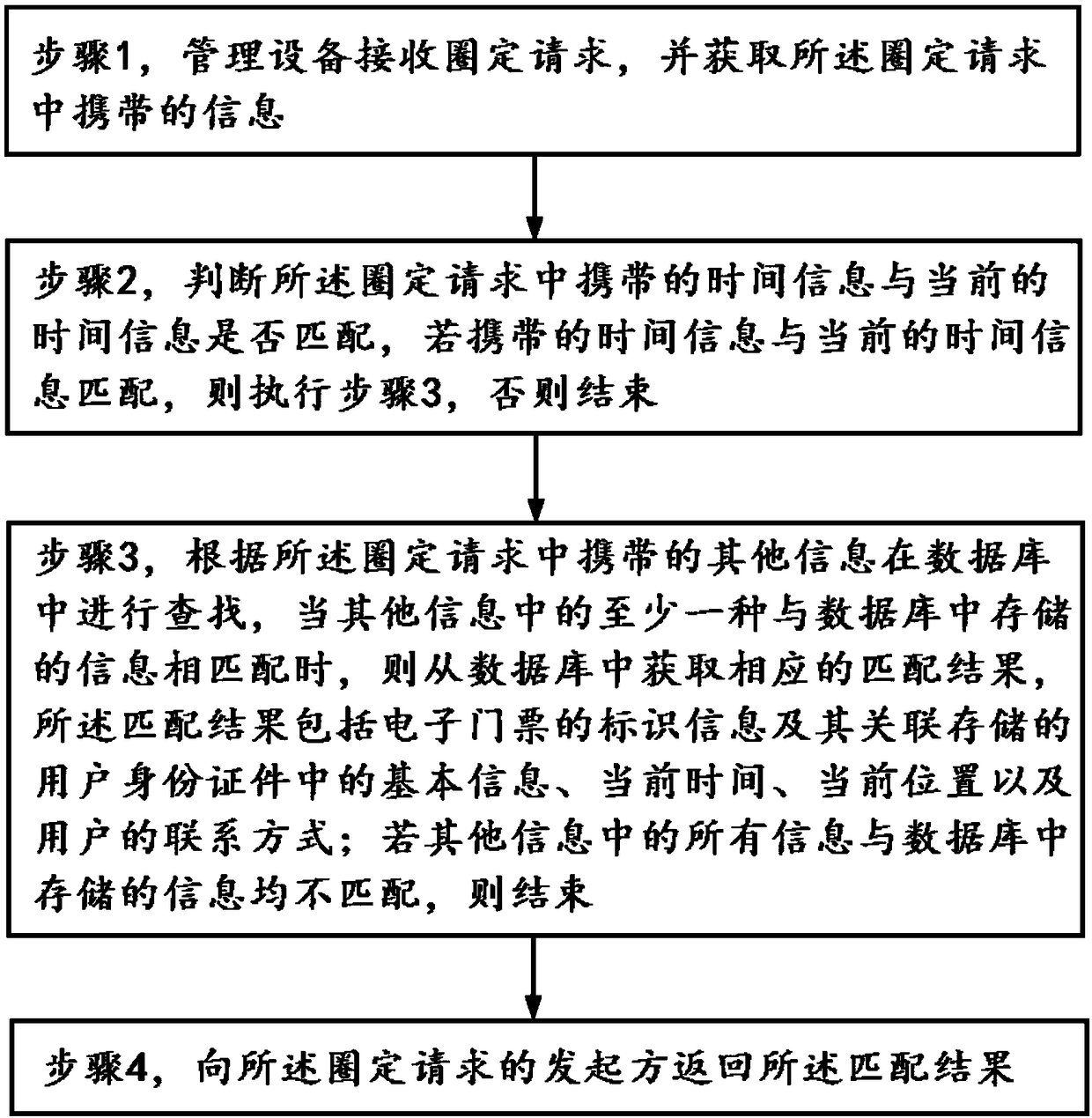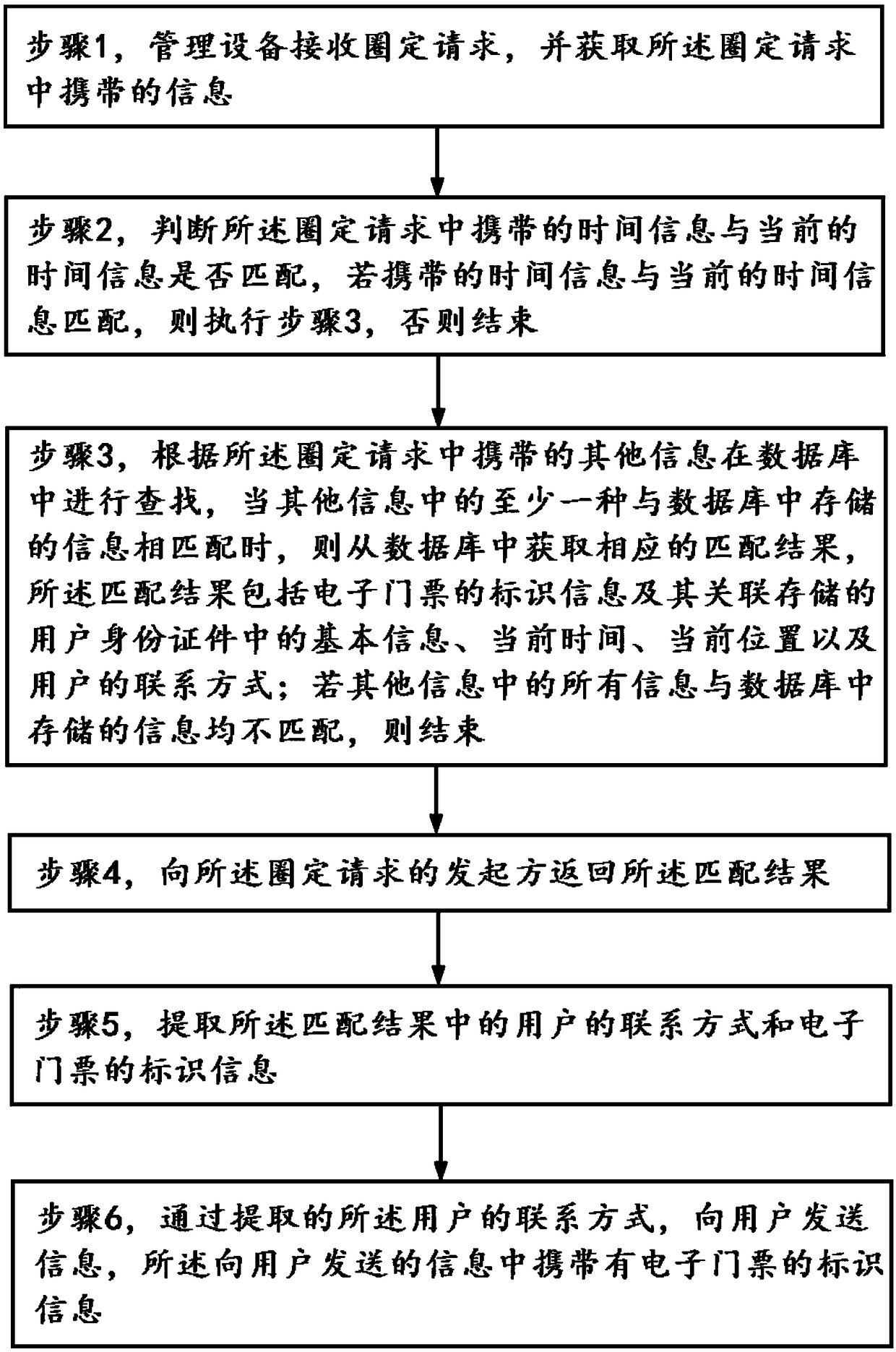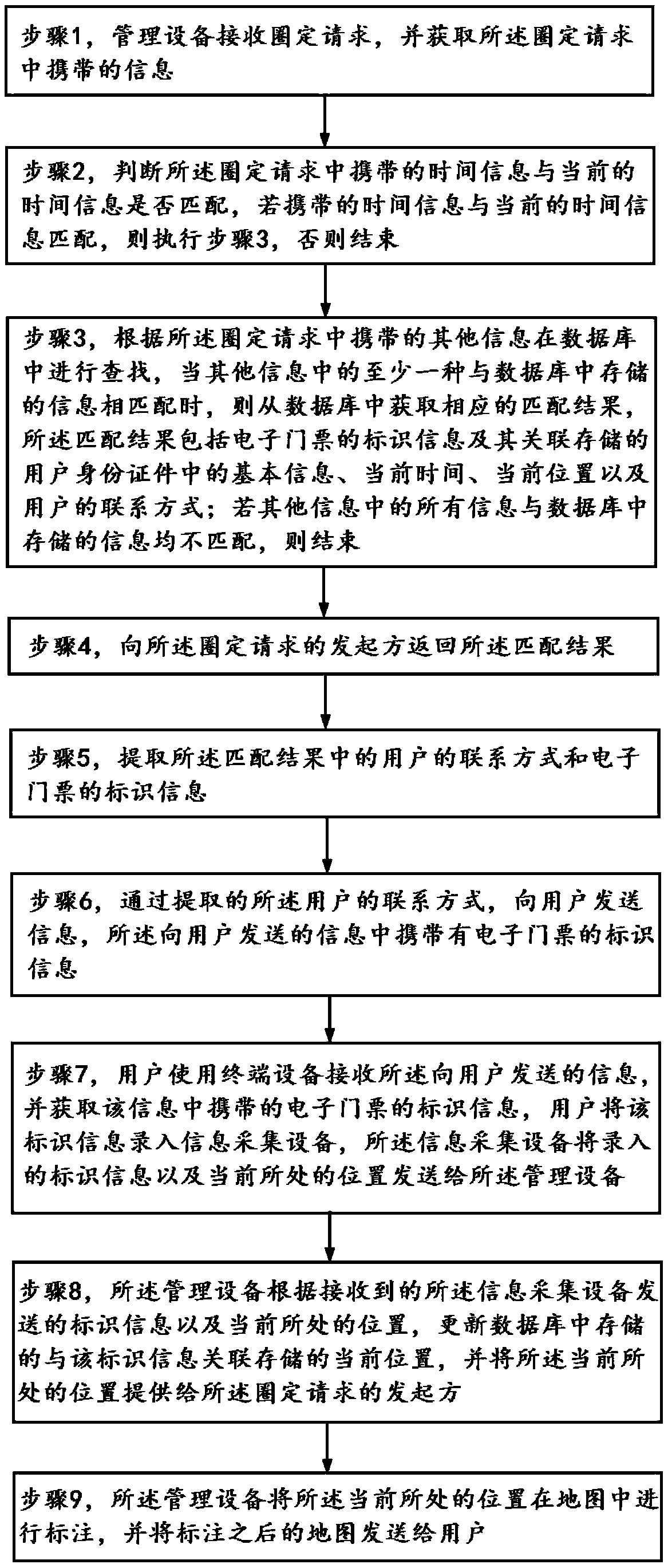Guest delineation method
A technology for tourists and initiators, applied in the field of tourist search, it can solve the problems of waste of time for users to play, no user identification means, long queues, etc., to achieve the effect of improving security and scientificity
- Summary
- Abstract
- Description
- Claims
- Application Information
AI Technical Summary
Problems solved by technology
Method used
Image
Examples
Embodiment Construction
[0036] Below in conjunction with specific embodiment the present invention is described in further detail:
[0037] figure 1 is a schematic flowchart of a method for delineating tourists according to an embodiment of the present invention. In this embodiment, the delineation method includes the following steps:
[0038] Step 1, the management device receives the delineation request, and obtains the information carried in the delineation request;
[0039] The delineation request carries time information and other information, including facial photos, basic information and contact information in ID documents;
[0040] The above time information includes date information and time information, for example, XX: XX, XX, XX, XX, XX, XX, XX, XX, the above time information can determine the initiation time of the above-mentioned delineation request, and the management device can also judge the time based on the determined initiation time. The rationality of the delineation request, ...
PUM
 Login to View More
Login to View More Abstract
Description
Claims
Application Information
 Login to View More
Login to View More - Generate Ideas
- Intellectual Property
- Life Sciences
- Materials
- Tech Scout
- Unparalleled Data Quality
- Higher Quality Content
- 60% Fewer Hallucinations
Browse by: Latest US Patents, China's latest patents, Technical Efficacy Thesaurus, Application Domain, Technology Topic, Popular Technical Reports.
© 2025 PatSnap. All rights reserved.Legal|Privacy policy|Modern Slavery Act Transparency Statement|Sitemap|About US| Contact US: help@patsnap.com



